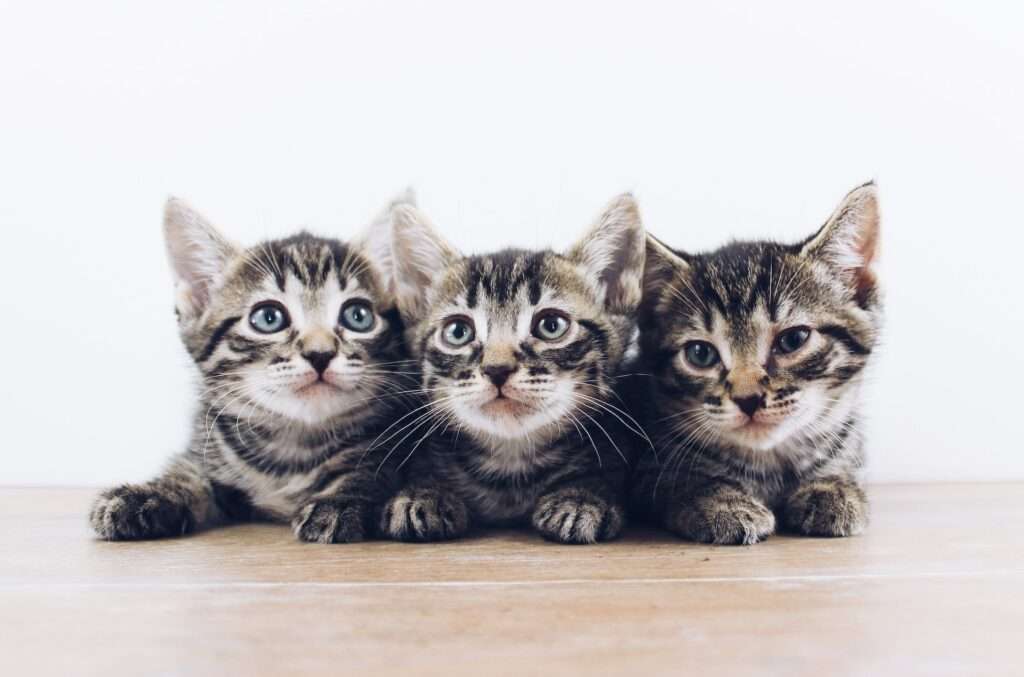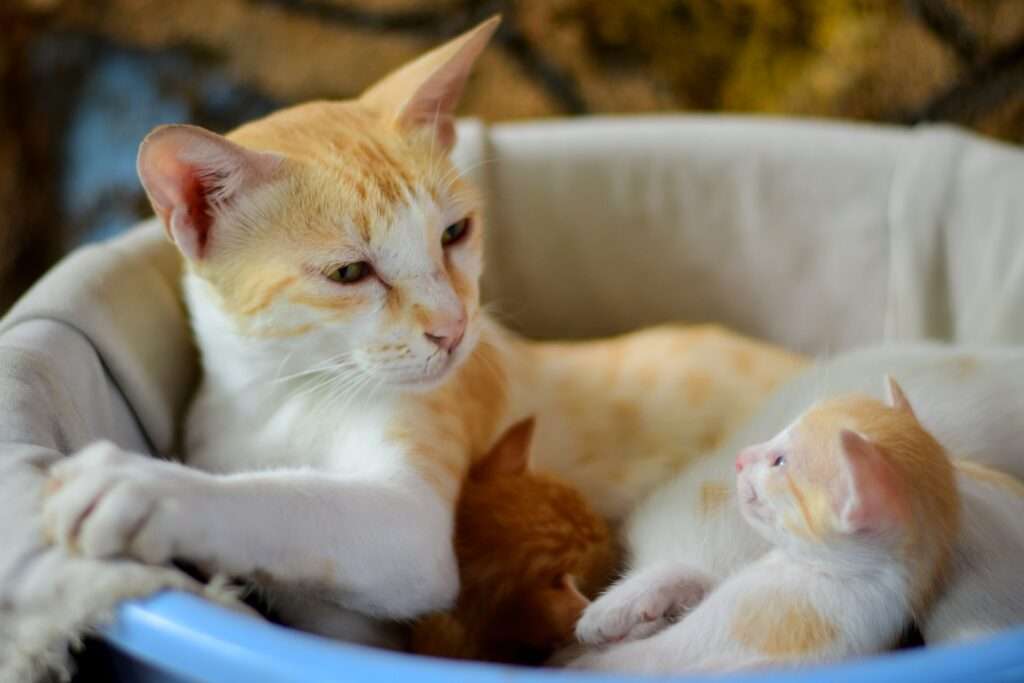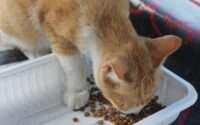How Many Kittens Can a Cat Have? The Answer Might Surprise You!
Bringing a new kitten into your family is a truly joyous occasion. However, it’s important to understand the basics of feline reproduction to ensure the health and happiness of your furry friend. The one key question that often comes to the minds of many cat owners is, “How many kittens can a cat have?”
This comprehensive guide delves into everything you need to know about feline reproduction and the number of kittens that you can expect your cat to have.
Understanding Feline Reproduction
Feline reproduction is a complex process that is governed by a variety of biological factors. Female cats are “seasonally polyestrous,” which means that they go into heat multiple times throughout the year. During this phase, a cat’s ovaries release eggs that can potentially be fertilized by sperm from a male cat. Following fertilization, the eggs move through the cat’s reproductive system and ultimately implant themselves in the uterus.
Hormones play a critical function in the reproductive cycle of felines, with estrogen and progesterone levels fluctuating throughout the process. These hormones help regulate the cat’s heat cycles and prepare the uterus for pregnancy. Cats typically reach sexual maturity around six months of age, although some breeds may mature earlier or later.
Factors that Affect Litter Size

Several factors can influence the number of kittens a cat has in each litter. Genetics and breed play a role, with some breeds more likely to have larger litters than others. Age and health are also important factors, as younger cats and those in good health may be more likely to have larger litters.
Nutrition and diet are also critical factors, as cats that are well-nourished are more likely to have healthy litters. Additionally, environmental factors such as stress can also impact the number of kittens in a litter. Cats that are exposed to stressful situations may have smaller litters or even miscarry.
It’s important to remember that there is no universal answer to the question of how many kittens a cat can have. Each cat is unique and may have different factors that impact their litter size. However, by providing a healthy environment and proper nutrition, you can help ensure that your cat has the best chance for a healthy and happy litter.
Average Litter Size for Different Breeds
Although litter size can be influenced by numerous factors, certain cat breeds have established litter size patterns. For instance, domestic shorthair and longhair cats, which constitute the majority of felines in the United States, tend to have litters with 4-6 kittens as a general guideline.
Purebred cats may have larger or smaller litters depending on the breed. For example, Siamese cats are known for having smaller litters of around 2-4 kittens, while Persian cats may have litters of 6 or more kittens.
Even wild cat species can also provide insight into feline reproduction. The number of cubs in a litter can vary greatly depending on the type of cat. For instance, lions generally have litters consisting of 2-4 cubs, while cheetahs may have litters ranging from 3-5 cubs. While litter sizes can vary widely among different cat breeds and species, these general benchmarks may serve as a helpful reference point for cat owners.
The Stages of Feline Pregnancy
Following conception, a cat will experience various phases of pregnancy that are crucial to comprehend. The initial stage is the fertilization stage, in which the eggs are fertilized by the male cat’s sperm.
The second stage is the embryonic stage, where the fertilized eggs divide and form embryos. This stage lasts for around two weeks, and during this time, it’s important to provide your cat with a healthy diet and plenty of rest.
The third stage is the fetal stage, where the embryos develop into fully-formed kittens. This stage lasts for around six weeks, and during this time, your cat may start to show physical signs of pregnancy such as a swollen belly and enlarged nipples.
Finally, the fourth stage is the birthing stage, where the kittens are born. This can be a stressful and challenging time for both you and your cat, so it’s important to be prepared and have a plan in place for the birth.
Caring for a Pregnant Cat and Her Kittens

Caring for a pregnant cat and her litter demands a great deal of patience, commitment, and time. It’s essential to offer your cat a nutritious and balanced diet during her pregnancy, as well as adequate rest and relaxation to ensure her well-being.
After birth, the kittens will require constant care, which includes regular feedings and providing a warm and cozy environment to keep them comfortable. You’ll also need to monitor their weight gain and overall health to ensure that they are developing properly.
Working closely with your veterinarian during your cat’s pregnancy and birthing process is vital to ensure the well-being of both your cat and her kittens. Your vet can offer valuable advice on nutrition, monitoring, and various aspects of care, as well as address any potential health concerns that may emerge.
Potential Complications During Pregnancy and Delivery
While most cat pregnancies and deliveries go smoothly, there is always a risk of potential complications. Some common issues include:
- Fading kitten syndrome, where kittens are born weak and fail to thrive
- Dystocia, or difficulty with delivery, which can be caused by a variety of factors such as large litter size or the shape of the mother’s pelvis
- Stillbirths or miscarriages
- Infections or other health issues in the mother
If you happen to observe any alarming symptoms during your cat’s pregnancy or delivery, such as decreased energy, loss of appetite, or respiratory distress, it’s crucial to seek immediate veterinary assistance. They can help determine the cause of the issue and provide appropriate treatment.
The Importance of Spaying and Neutering
Spaying or neutering your cat is a highly effective method for preventing any potential complications that may arise during pregnancy and delivery. Spaying, which is the removal of the ovaries and uterus in female cats, prevents pregnancy altogether and also eliminates the risk of uterine infections and certain types of cancer.
Neutering, which is the removal of the testicles in male cats, not only prevents unwanted pregnancies but also reduces the risk of certain types of cancer and can help prevent behavioral issues such as spraying and marking.
Spaying and neutering also have benefits for the overall cat population, as it helps reduce the number of homeless and feral cats. It’s important to spay or neuter your cat at a young age, ideally before they reach sexual maturity, to maximize the health and behavioral benefits.
Conclusion
In summary, cats are amazing creatures, and their reproductive abilities can be fascinating to observe. Although there is no exact number on how many kittens a cat can have, several factors, such as the cat’s age, breed, and overall health can influence the size of their litter.
As a responsible cat owner, it’s crucial to have a thorough understanding of the various stages of feline pregnancy and delivery, as well as the possible complications that can occur. By providing your cat with the necessary care, nutrition, and attention throughout the entire process, you can ensure that both the mother and her kittens remain in good health and are happy.
Spaying and neutering your cat not only prevents potential complications and health issues, but it also has the added benefit of contributing to the overall welfare of the cat population. By taking these steps, you can enjoy the joy and wonder of feline reproduction while also being a responsible and caring cat owner.
Frequently Asked Questions
What is the average litter size for a cat?
On average, a cat’s litter size is between 3 to 5 kittens. However, some cats can have as many as 12 kittens in a single litter.
Can a cat have more than one litter at a time?
No, a cat cannot have more than one litter at a time. However, cats can have multiple litters in a year.
How often can a cat have kittens?
Cats can have multiple litters in a year, with the average being two to three litters per year.
What factors affect the size of a cat’s litter?
The size of a cat’s litter can be affected by several factors, including the cat’s breed, age, health, and nutrition. First-time mothers and older mothers may have smaller litters.
Can a cat have too many kittens in a litter?
Yes, a cat can have too many kittens in a litter, which can lead to health problems for both the mother and the kittens. It is important to monitor the health of the mother and ensure that all of the kittens are receiving enough milk and care.
What is the smallest litter size a cat can have?
The smallest litter size a cat can have is one kitten. However, this is rare and most cats will have at least two or three kittens in a litter.
What is the largest litter size a cat can have?
The largest litter size a cat can have is around 12 kittens. However, this is also rare and most cats will have between 3 to 5 kittens in a litter.
How long does it take for a cat to have a litter of kittens?
The gestation period for cats is usually around 63-65 days, or just over 2 months. However, this can vary slightly depending on the individual cat.
Can a cat have a litter of kittens from different fathers?
Yes, it is possible for a cat to have a litter of kittens from different fathers. This is known as superfecundation and can occur when a female cat mates with multiple males during her fertile period.
How long should you wait before separating kittens from their mother?
Kittens should be kept with their mother for at least 8 weeks, as this is the period during which they learn important social and behavioral skills from their mother and siblings. After 8 weeks, they can be safely separated from their mother and placed in new homes.



